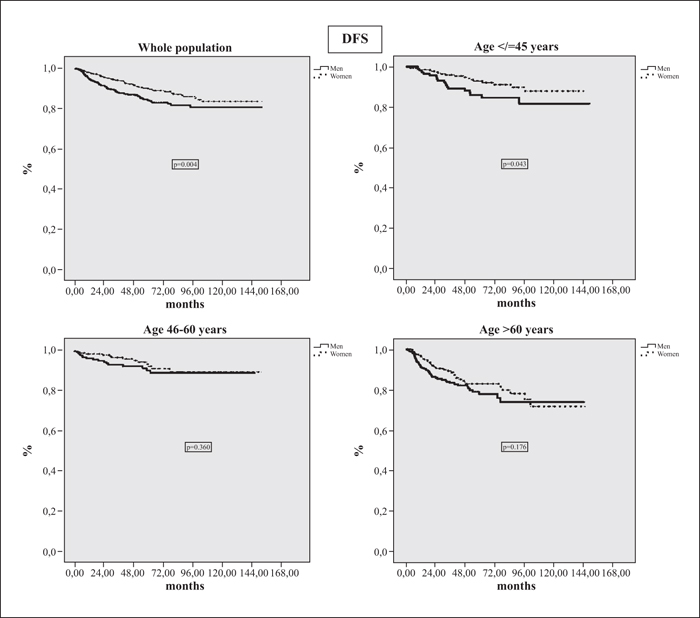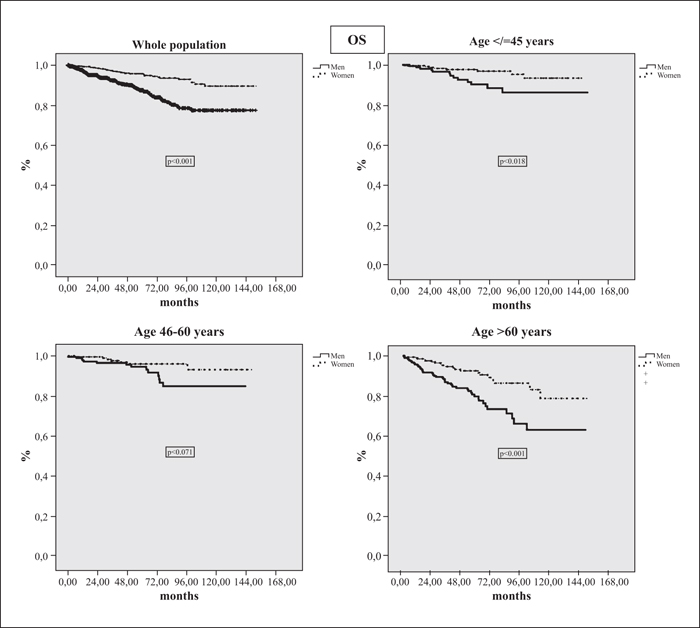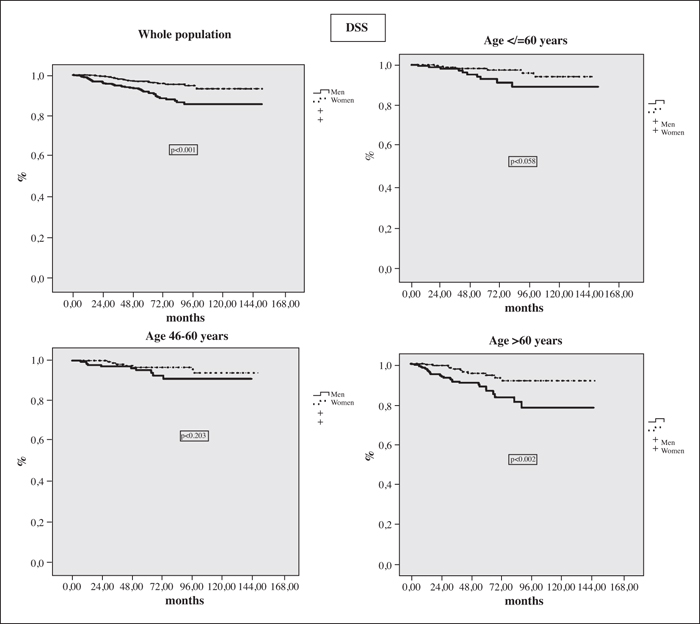European Journal of Dermatology
MENUSurvival advantage of women in localized melanoma mainly relies on clinical-pathological differences by sex. A retrospective study of 1,607 patients in Valencia, Spain Volume 25, numéro 3, May-June 2015
Instituto Valenciano de Oncología,
C. Profesor Beltran Baguena, 8; 46009 Valencia, Spain
Consorcio Hospital General Universitari,
Avda. Tres Cruces, s/n; 46014 Valencia, Spain
c/ Quevedo, 2; 46001 Valencia, Spain
- Mots-clés : melanoma, gender, prognosis, survival
- DOI : 10.1684/ejd.2015.2557
- Page(s) : 247-54
- Année de parution : 2015
Background: Among melanoma patients, women have a better prognosis than men but the differences might be due to a different presentation of melanoma. Objectives: The aim of this study was to identify differences in clinical presentation and survival in cutaneous melanoma between men and women in a Spanish population stratified by age. Materials & Methods: In total, 1,607 consecutive patients with localized cutaneous melanoma and complete clinical and pathological information were evaluated. Average follow-up was 5 years. Patients were stratified by age into three groups: ≤45 years, 46-60 years, and >60 years. Disease-free survival, overall-survival and disease-specific survival were generated using the Kaplan-Meier method. Multivariate survival analyses were evaluated using Cox modelling. Results: Melanoma presented more frequently in the trunk in male patients and in the lower extremities and acral location in female patients. Men presented thicker tumors than women. However, for histological type, mitotic rate and ulceration there were no significant differences between the sexes. In the univariate survival analyses, women showed better disease-free, overall and disease-specific survival in the younger age group, compared with males of the same group. After adjusting for anatomical site, Breslow thickness, mitotic rate and presence of ulceration, there were no differences between males and females in any of the three age groups. Conclusion: The superior survival for women over men did not persist after adjusting for multiple prognostic variables such as anatomical site, Breslow thickness, mitotic rate and ulceration.




